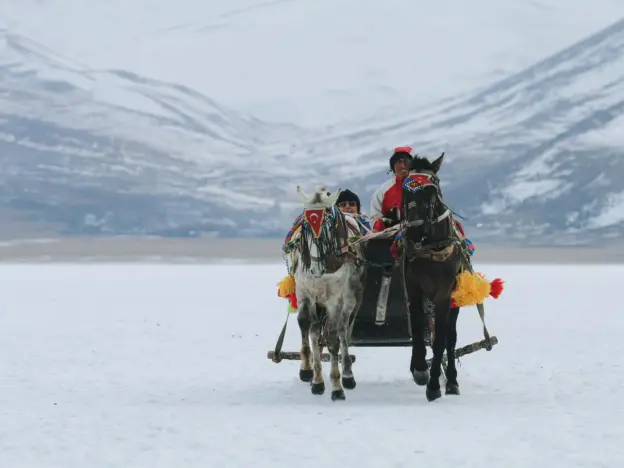Intro
Kirgizskaya and Kirgiz Mountain, the Kyrgyz Horse has been bred in the steppes of central north Asia and Siberia by the Kyrgyz people for over 4000 years. These animals are different than Mongolian animals, as they were domesticated prior to Mongolian civilization.
Origins
This breed is of ancient origin and it’s history is intimately bound to that of the Krighiz people who have long been nomadic cattle breeders. This horse breeding culture has been in place since as far back as 2000 BC, long before the Mongols came to the area on their tough little horses.
The first national stud farm was created in 1879 and began by crossing Russian trotter stallions with local Kyrgyz animals. Later in 1950 Russian zoologists attempted to further revive & improve the breed by crossing with heavier Russian breeds. In 1956 the breed was officially recognized under the name Novokyrgyz.
These animals are kept outside year round in largely difficult conditions, the pastures that feed them are mountain valleys. This shaped a hardy, well adapted little mountain horse that can handle treacherous terrain. Unfortunately the lack of pure numbers come from a need for larger animals and a lack of formal breeding programs when crossed.
This breed is unique in that research has shown that a six year old Kirghiz, upon being given better feed will begin to grow again for a short time. This is an adaptive trait that is solely their own.
Features
Average height 13.2 – 14.2 hands
Physique
Head is short with a slightly convex profile
Ears are small and mobile
Neck is broad and muscular
Back is broad, short and flat
Legs are strong with dry tendons
Feet are dry and solid
Traditional Colors
chestnut | grey | bay | roan | buckskin
Use
Racing
Meat production
Milk production
